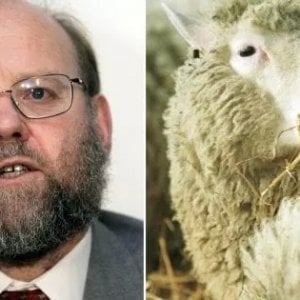For the first time, a monkey clone, a rhesus macaque, was born healthy and lived for over two years after the embryo was provided with a healthy placenta. The result, obtained in China, promises to make primate cloning more effective, thus opening the way to the possibility of obtaining reserves of stem cells to obtain miniature organs (organoids) with which to study the mechanisms underlying infertility and many diseases that affect humans. Published in the magazine Nature Communicationsthe research was conducted by the Chinese Academy of Sciences.
The result is the result of a very large number of experiments, coordinated by Zhen Liu and Qiang Sun. The latter obtained the first disease-carrying monkey embryos in 2018. The first author of the research is Zhaodi Liao.
Dolly the sheep
The new method consists in perfecting the nuclear transfer technique which in 1997 led to the announcement of the birth of Dolly the sheep, the first clone of a mammal. The technique consists in transferring the nucleus of an adult cell, i.e. the structure of the cell that contains the DNA, inside an oocyte deprived of its nucleus; in this way the cell is induced to regress to a very primitive and undifferentiated stage, to the point that if it is transferred to the uterus it is capable of giving rise to an embryo.
With this technique, clones of many mammal species have been obtained since the time of Dolly the sheep. However, in the case of monkeys, particularly rhesus macaques, the efficiency of this technique has always been very low, to the point that so far in only one case has an embryo survived birth for a few hours.
Ian Wilmut, ‘father’ of Dolly the sheep, has died

That the development of the placenta was the weak point of primate cloning emerged when researchers from the Chinese Academy of Sciences compared the genetic characteristics of monkey embryos at a primitive stage of development (blastocysts) obtained with in vitro fertilization and those obtained by cloning. Anomalies have thus been identified in the development of cloned embryos, both in the transmission of genetic information to the embryos and the placenta, and in the size of the placenta.
Embryonic tissue isolated
To overcome these obstacles, the authors of the research isolated the embryonic tissue that gives rise to the individual (called internal cell mass) from that which gives rise to the placenta (trophoblast) and which does not come into play in the formation of the embryo; then they transferred the internal cellular mass of the clone into another embryo, obtained with the Icsi technique (which consists of inserting a single spermatozoon into a mature oocyte) and deprived of the cells that give rise to the embryo. In this way the clone ended up having a healthy placenta.
Transplants, developed sheep embryos with human cells
by VIOLA RITA and VALERIA PINI
“Using this approach, we achieved the birth of a healthy rhesus monkey clone that survived for over two years,” the researchers note. “Although this result concerns only one monkey clone, the new technique – they add – could prove successful for cloning primates in the future”.

